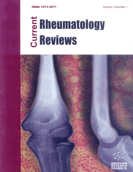
Abstract
Background: It is unclear whether patients with Anti-Glomerular Basement Membrane (GBM) disease and Anti-Neutrophil Cytoplasmic Antibodies (ANCA), so called “Double-Positive” (DP), have a different clinical presentation and outcome compared to patients with anti-GBM antibody disease alone. This study describes the clinical and histologic characteristics as well as the patient and renal outcomes of DP patients at the University of Washington compared to patients with anti-GBM antibody disease alone.
Methods: Adults admitted to the University of Washington and Harborview Medical Centers from 2000 to 2016 who had a kidney biopsy showing anti-GBM disease characterized by crescentic glomerulonephritis with strong linear staining of glomerular basement membranes for IgG by immunofluorescence were included. Subjects were classified into anti-GBM or DP based on serologic testing. Information on demographics, clinical presentation, biopsy findings, initial treatment, and rates of relapse and patient and renal survival were collected. Continuous and categorical variables were analyzed using the Mann-Whitney U and Fisher’s exact tests, respectively.
Results: There were 6 anti-GBM and 7 DP patients. Two patients were lost to follow-up after one year. There was no significant difference in clinical presentation or outcomes between the two groups. Two DP patients had greater than 50% global glomerulosclerosis. All the subjects developed ESRD. Two DP patients had a relapse while off immunosuppression. Two patients in each group died within 5 years of diagnosis.
Conclusion: Two DP patients in our cohort had a relapse within 5 years of diagnosis. Multicenter studies are needed to determine whether DP patients have a higher relapse rate and need prolonged immunosuppression.
Keywords: Anti-glomerular basement membrane disease, antineutrophil cytoplasmic antibodies, glomerulonephritis, treatment outcome, immunosuppression, initial treatment.
[http://dx.doi.org/10.1038/ki.1990.72] [PMID: 2179617]
[PMID: 1657470]
[PMID: 8248108]
[http://dx.doi.org/10.1111/j.1523-1755.2004.00917.x] [PMID: 15458448]
[http://dx.doi.org/10.1053/j.ajkd.2005.05.003] [PMID: 16112043]
[http://dx.doi.org/10.1556/OH.2013.29735] [PMID: 24140508]
[http://dx.doi.org/10.1007/s10067-013-2268-5] [PMID: 23624587]
[http://dx.doi.org/10.1093/ndt/gfu399] [PMID: 25609740]
[http://dx.doi.org/10.1016/j.kint.2017.03.014] [PMID: 28506760]
[http://dx.doi.org/10.1681/ASN.2010090928] [PMID: 21868497]












